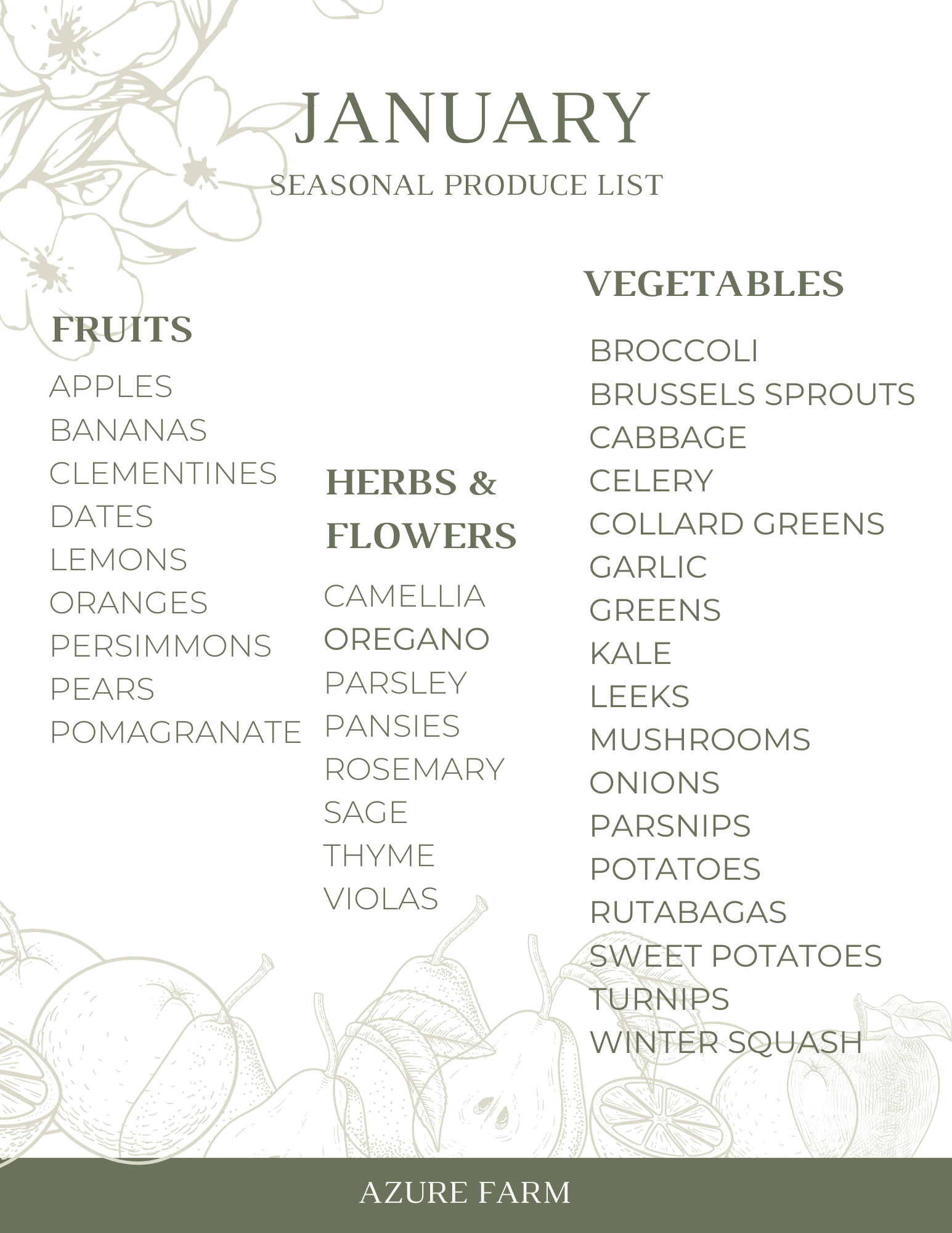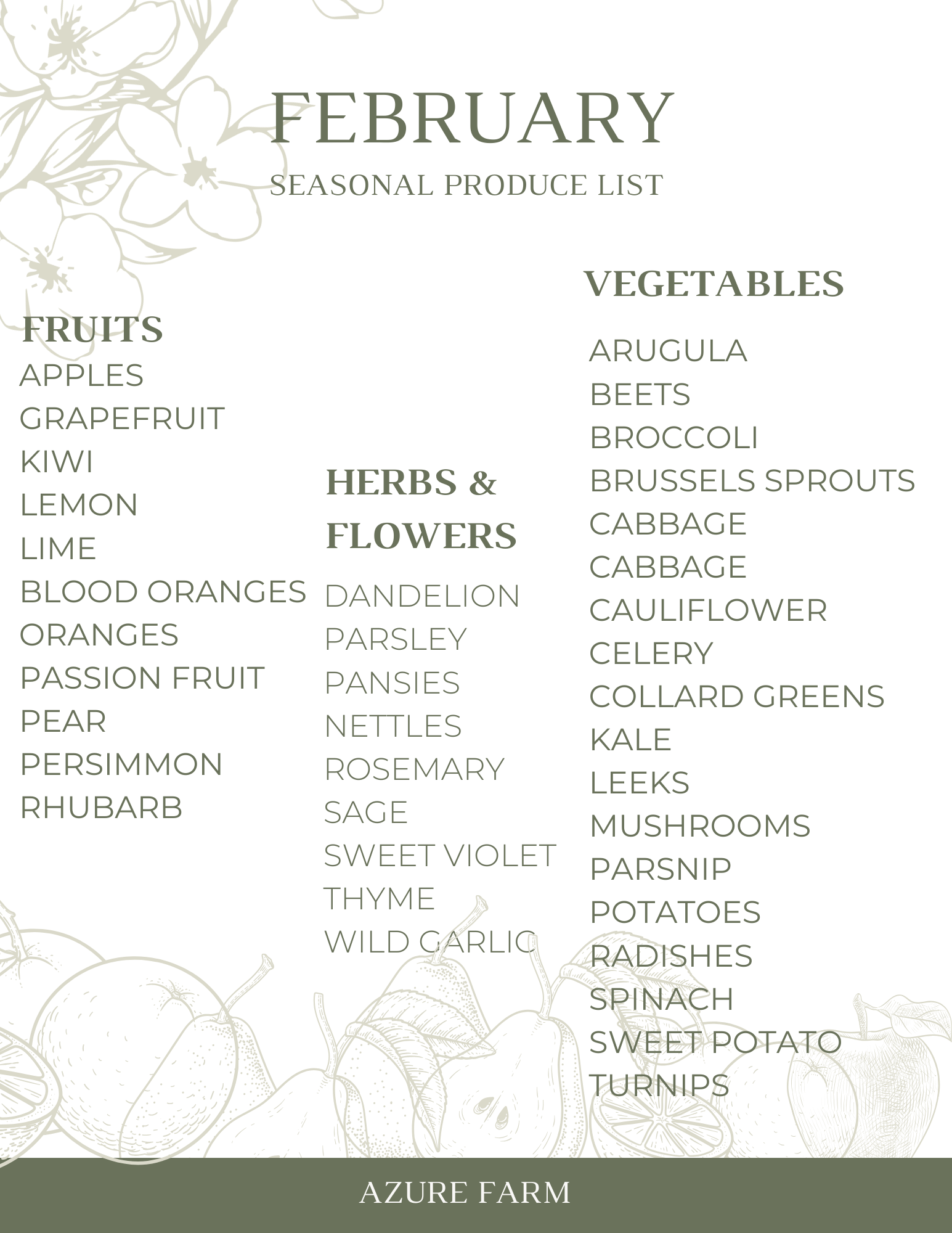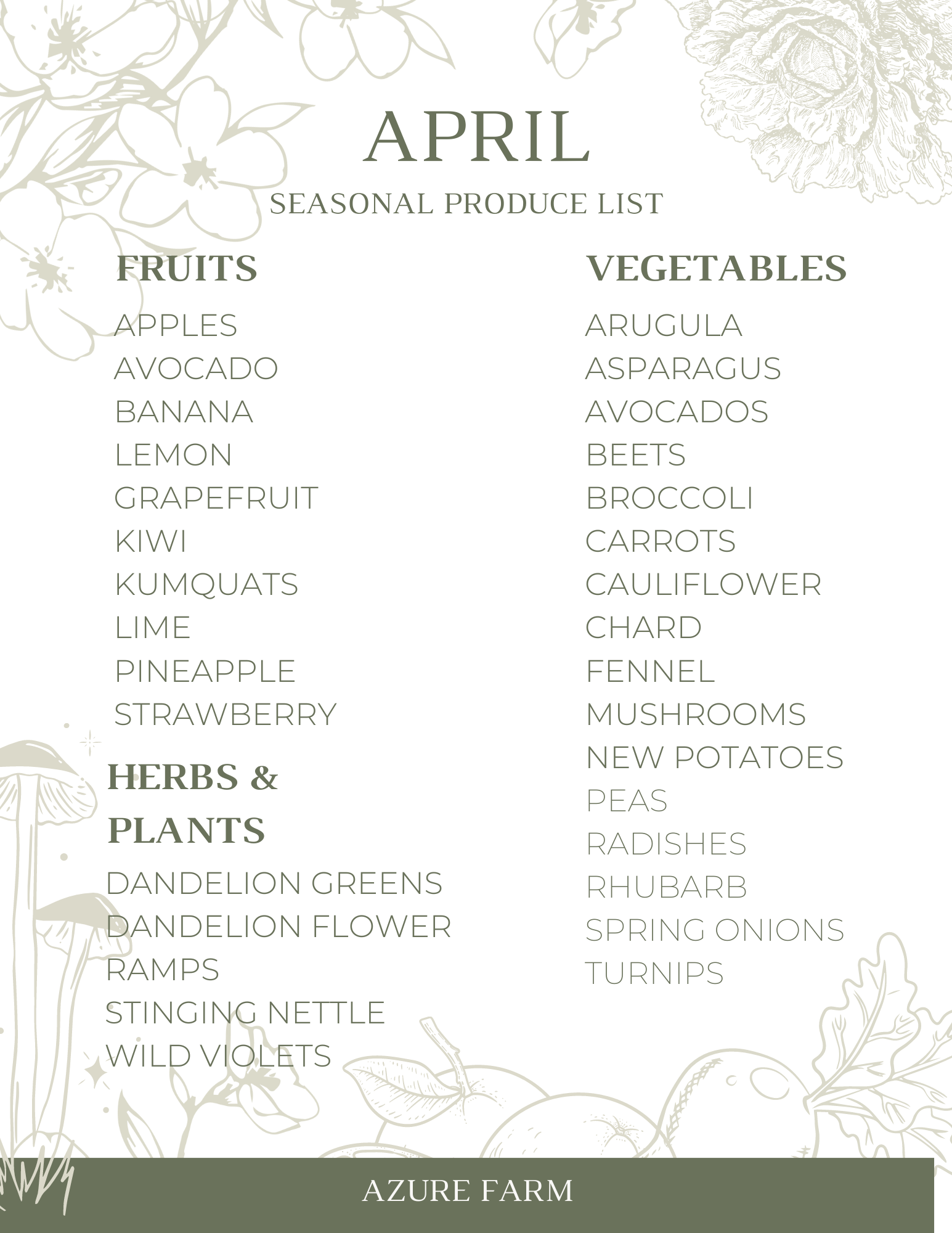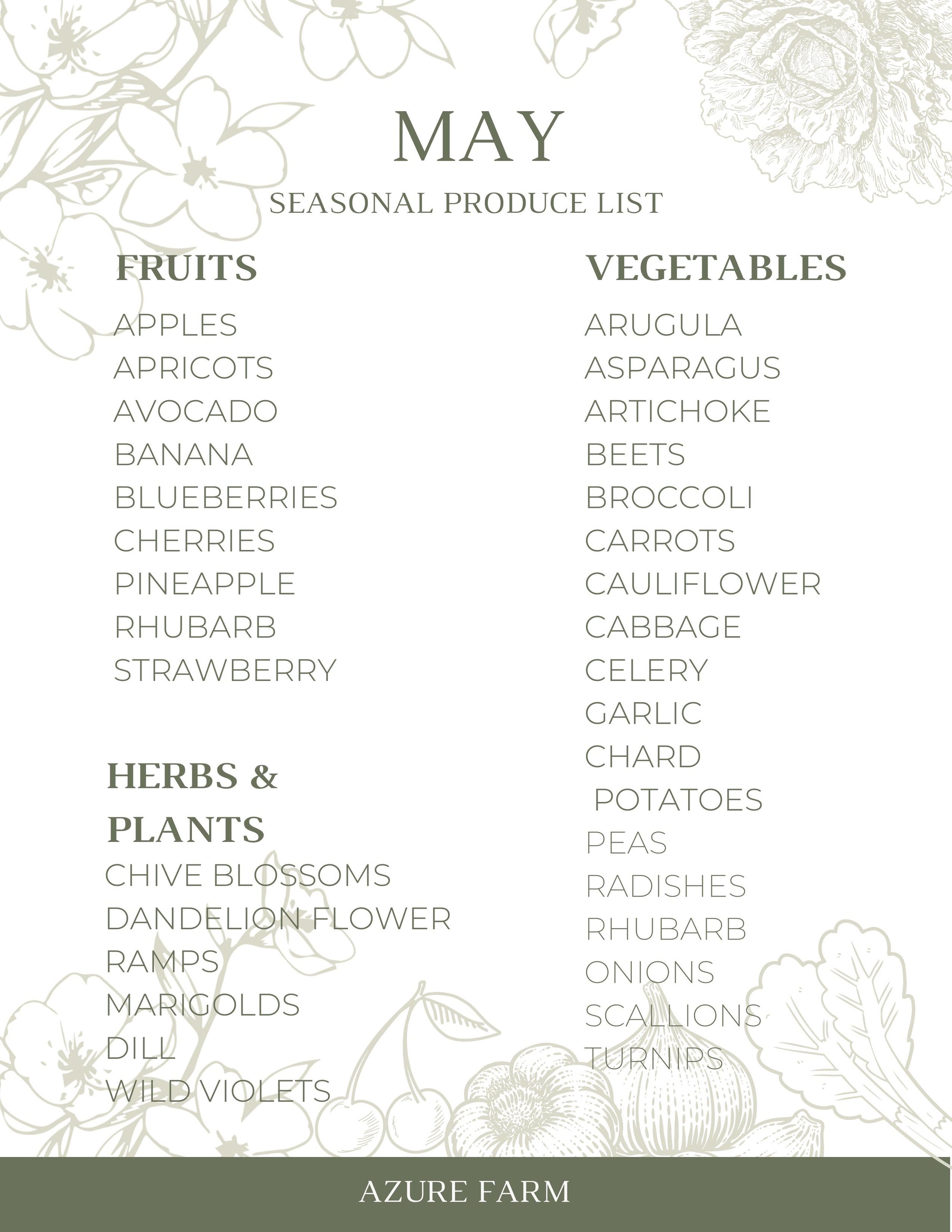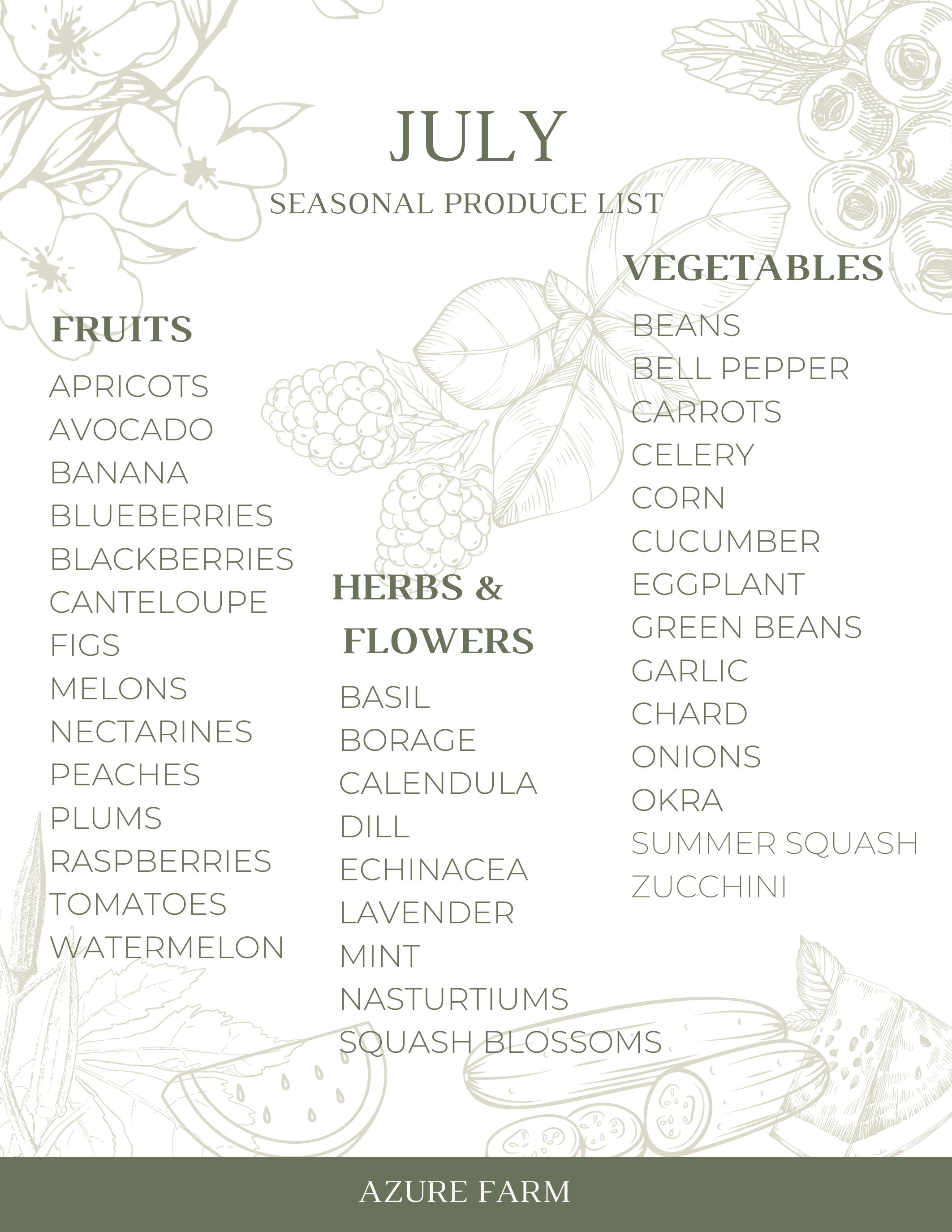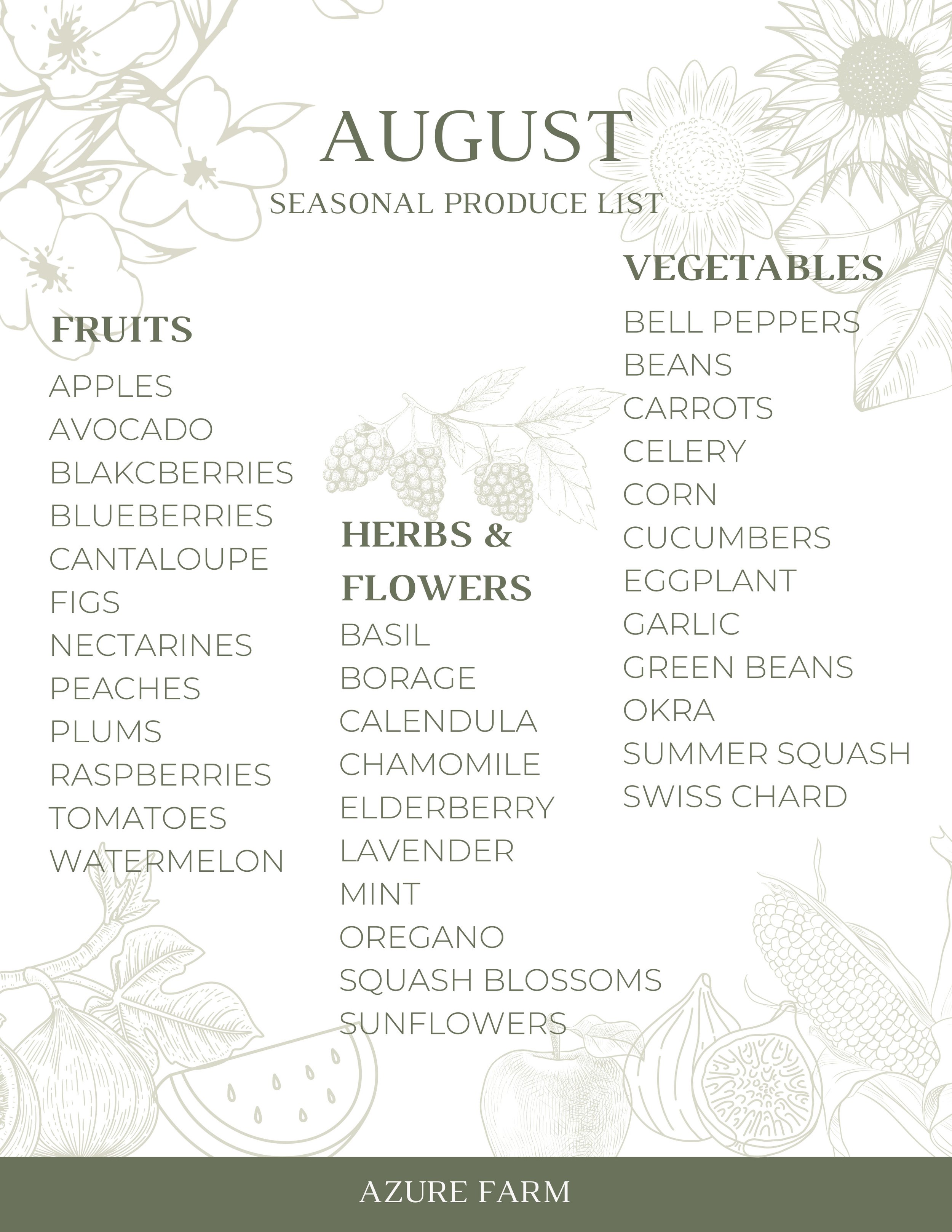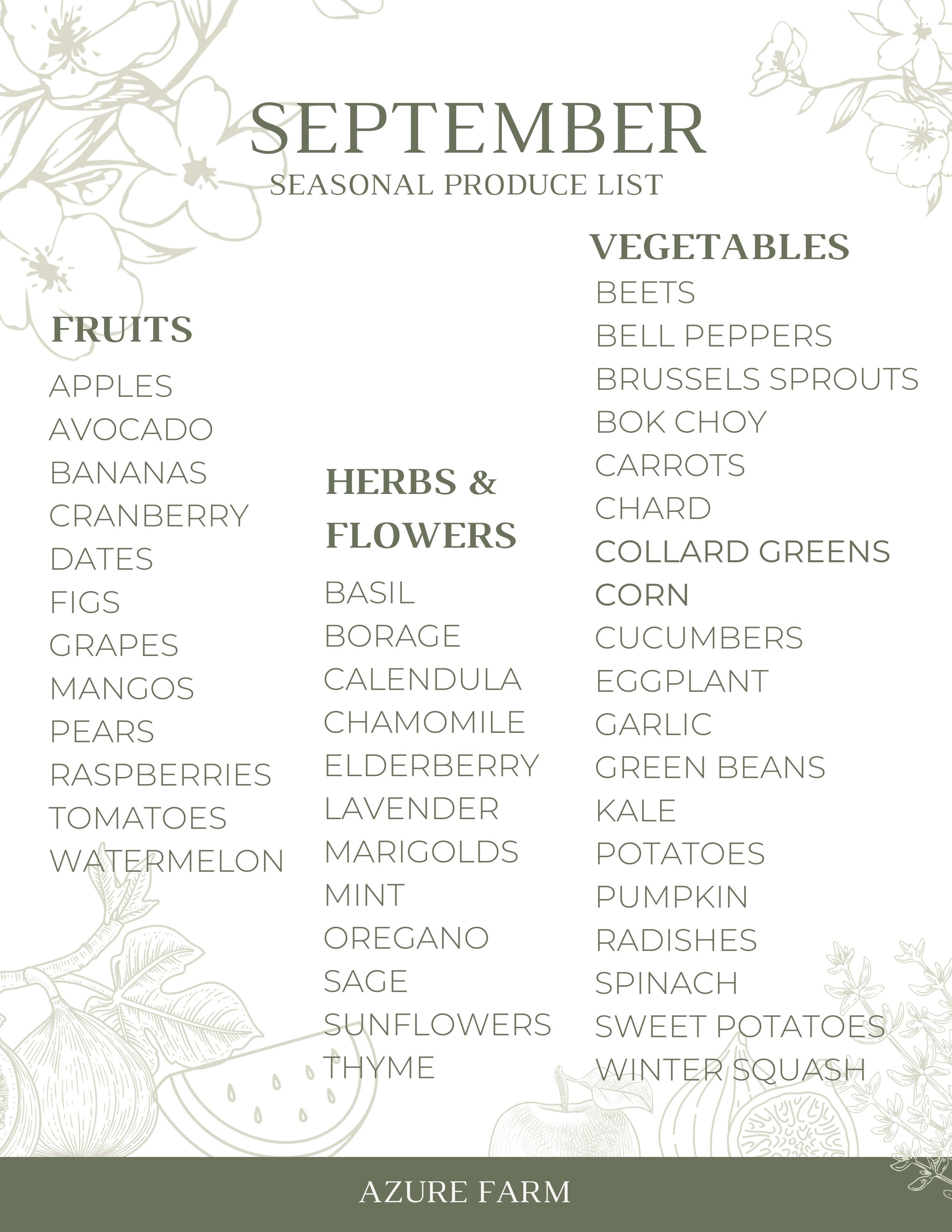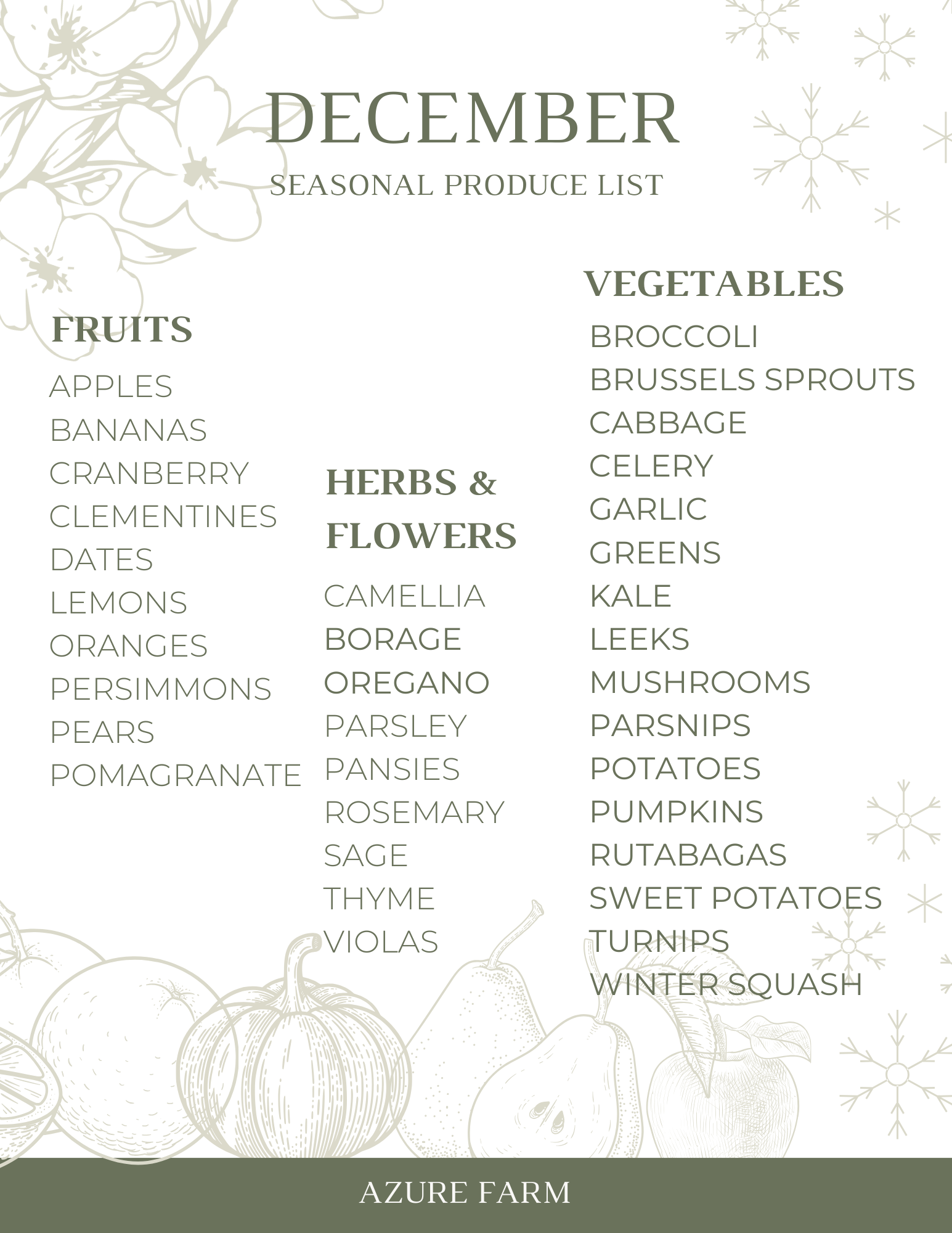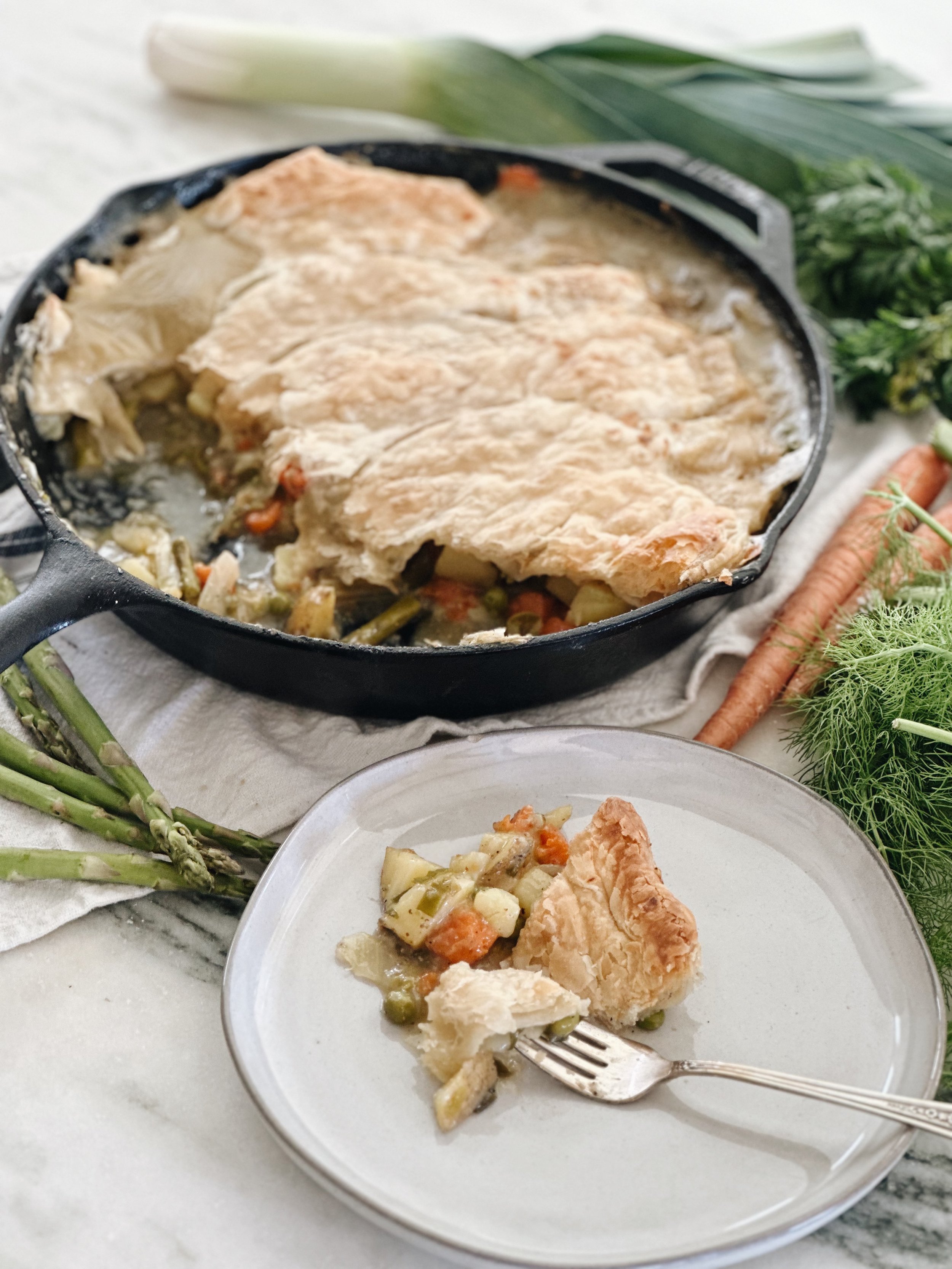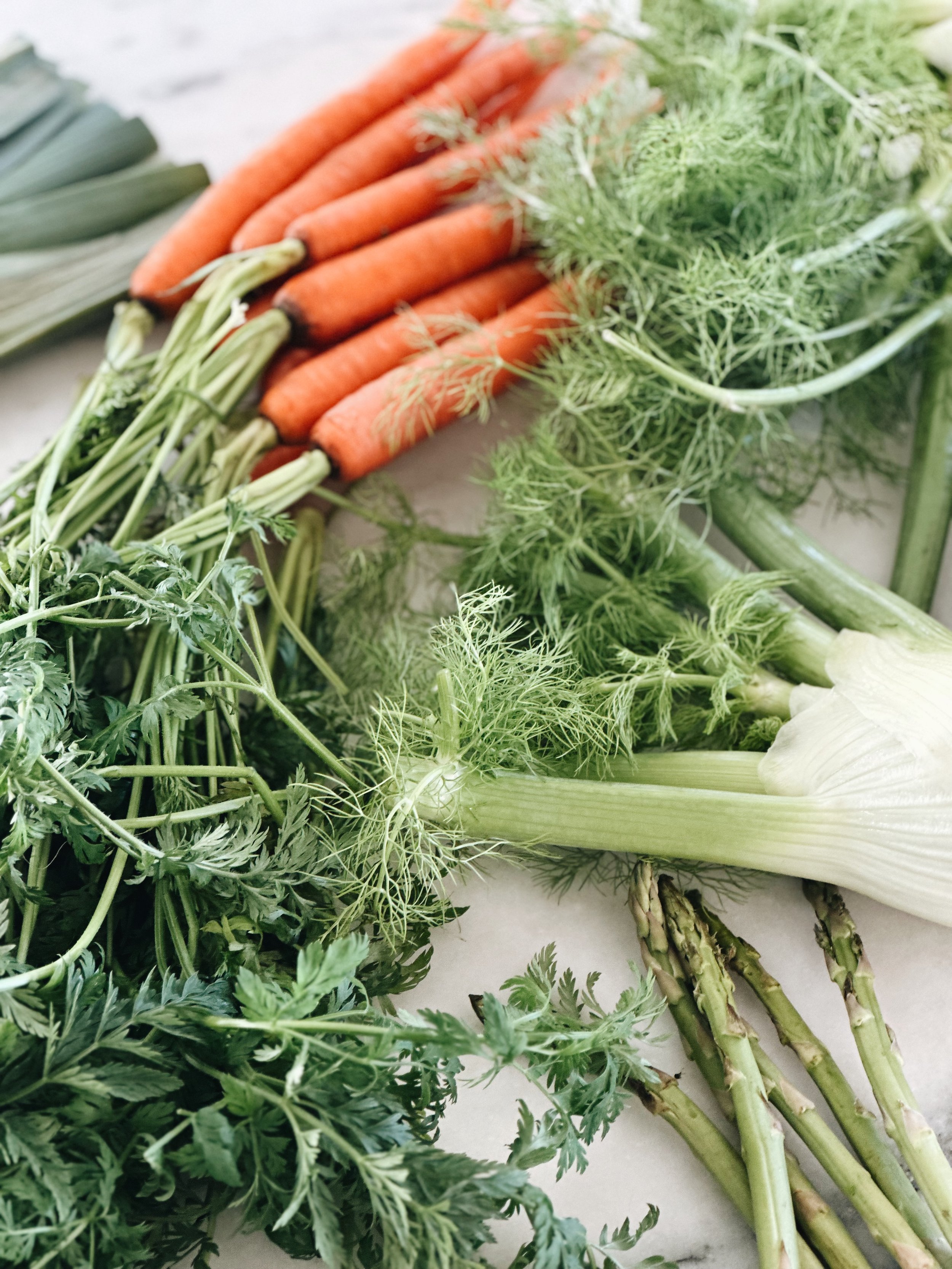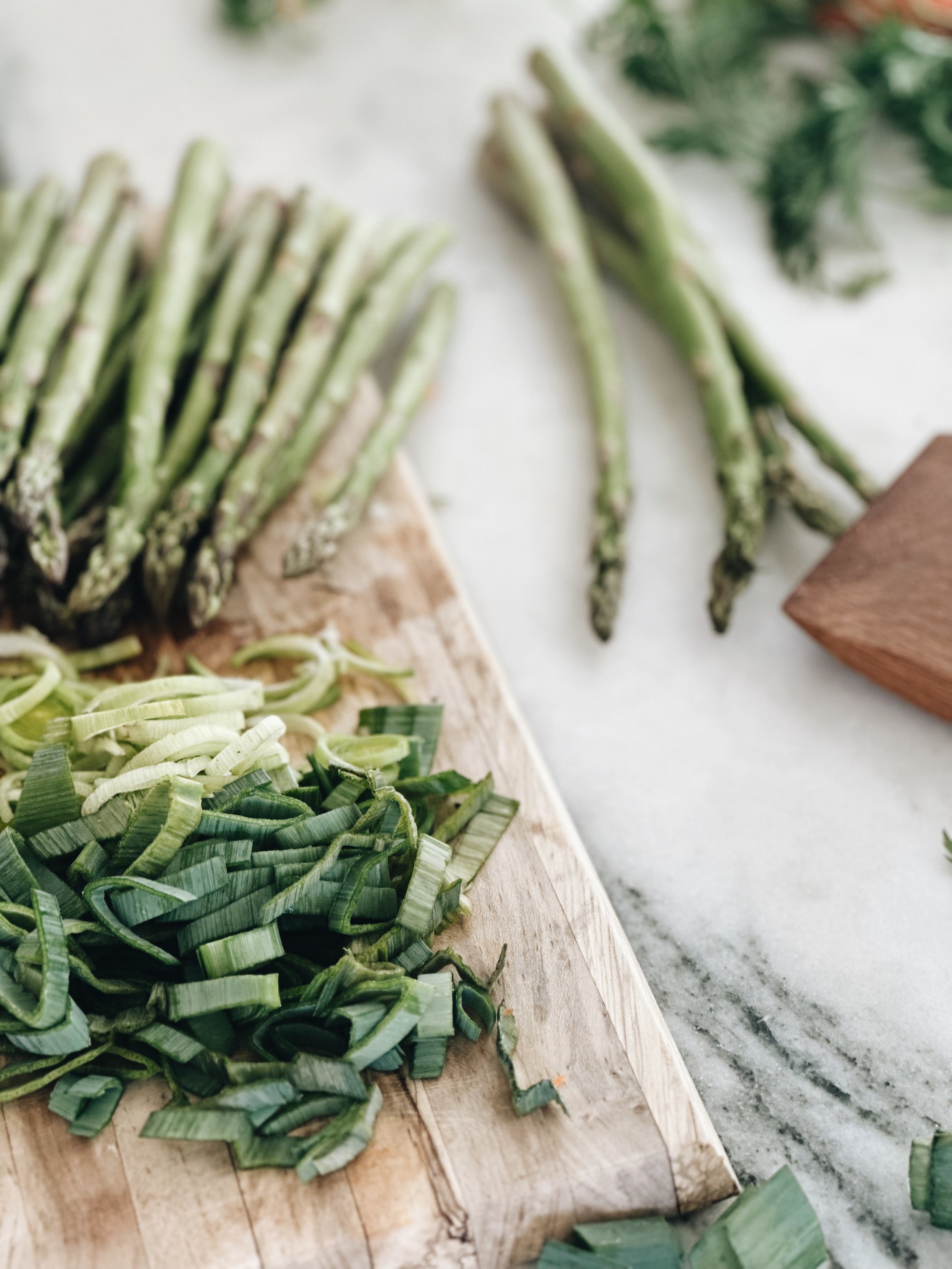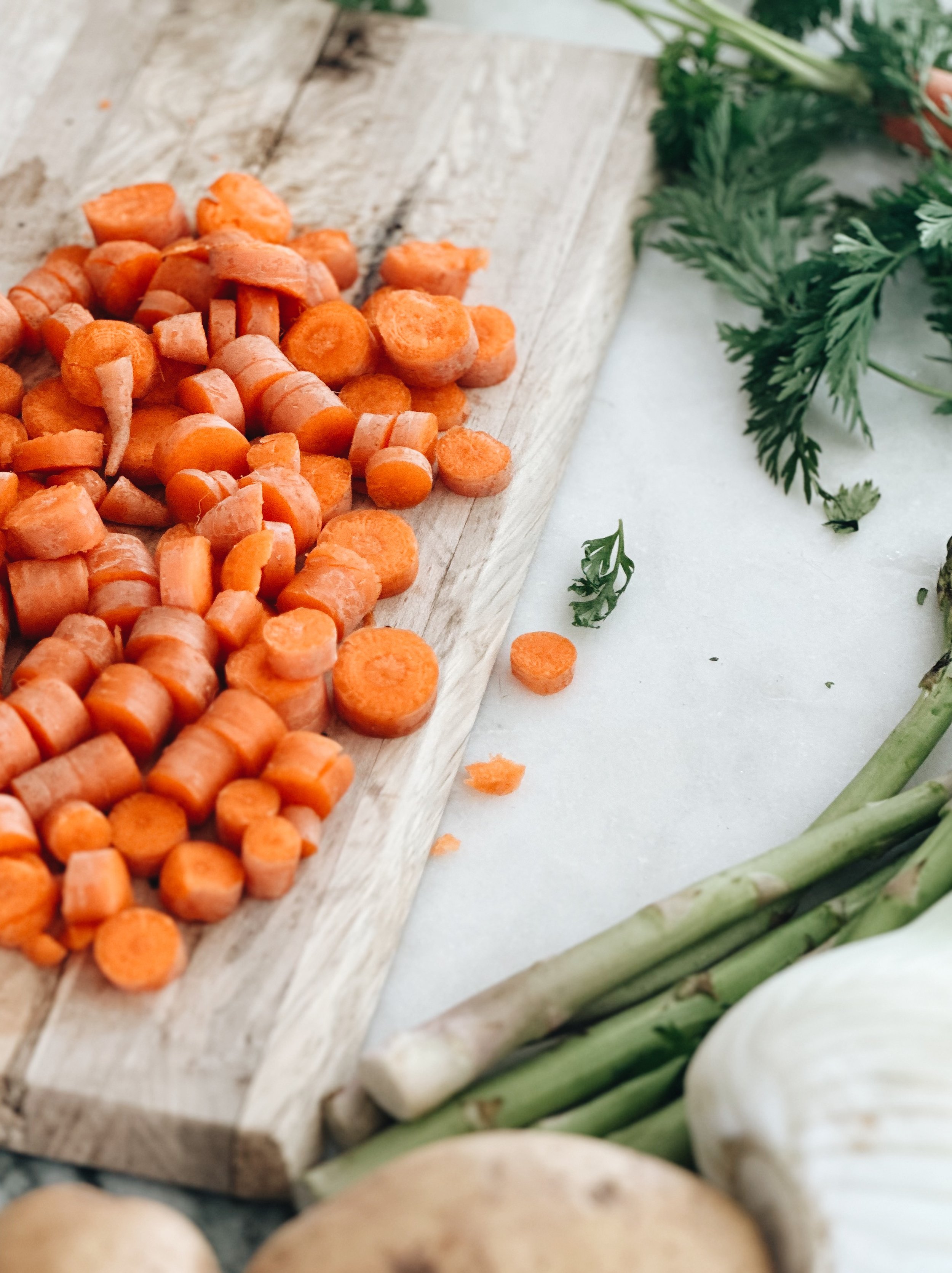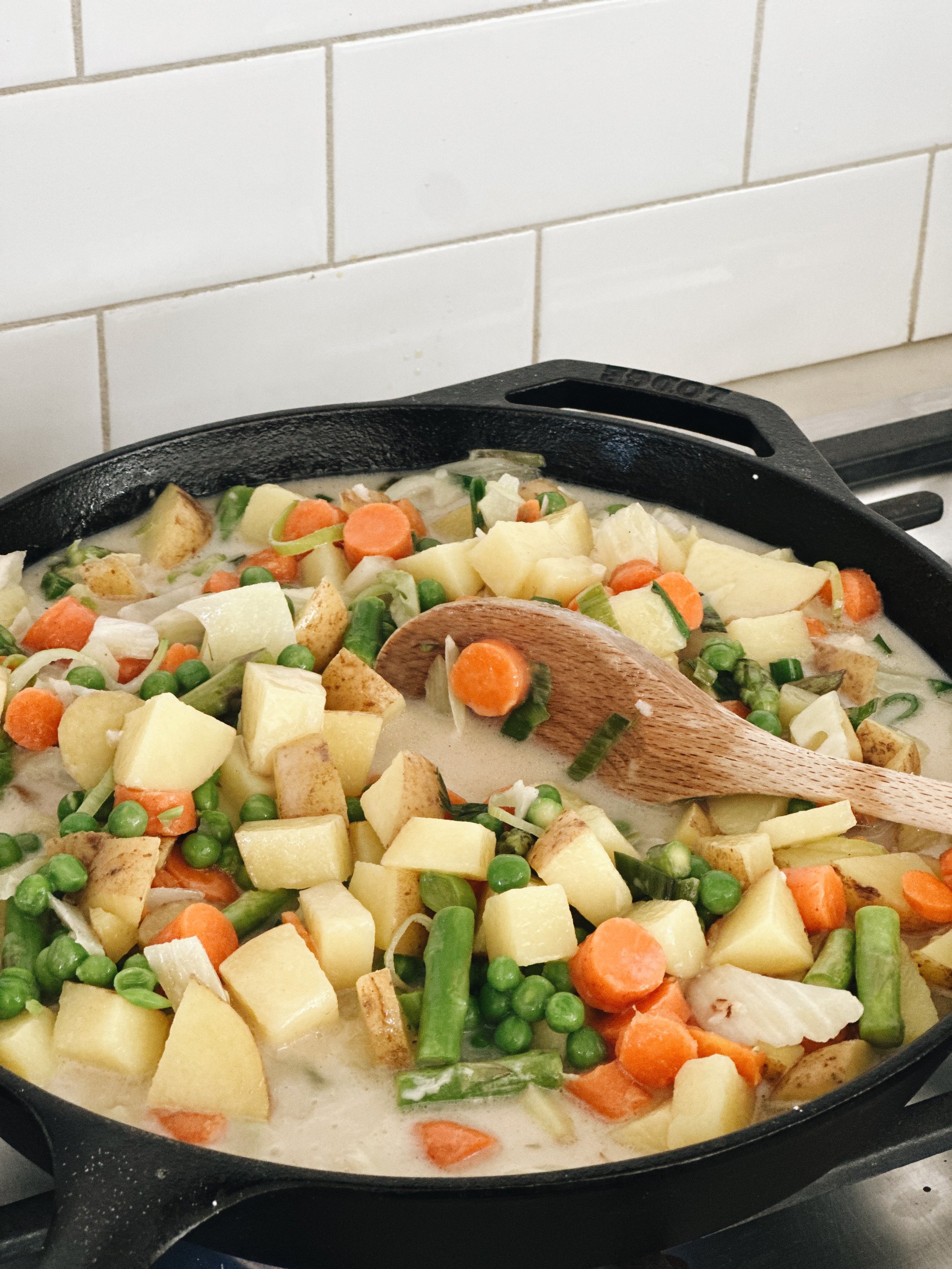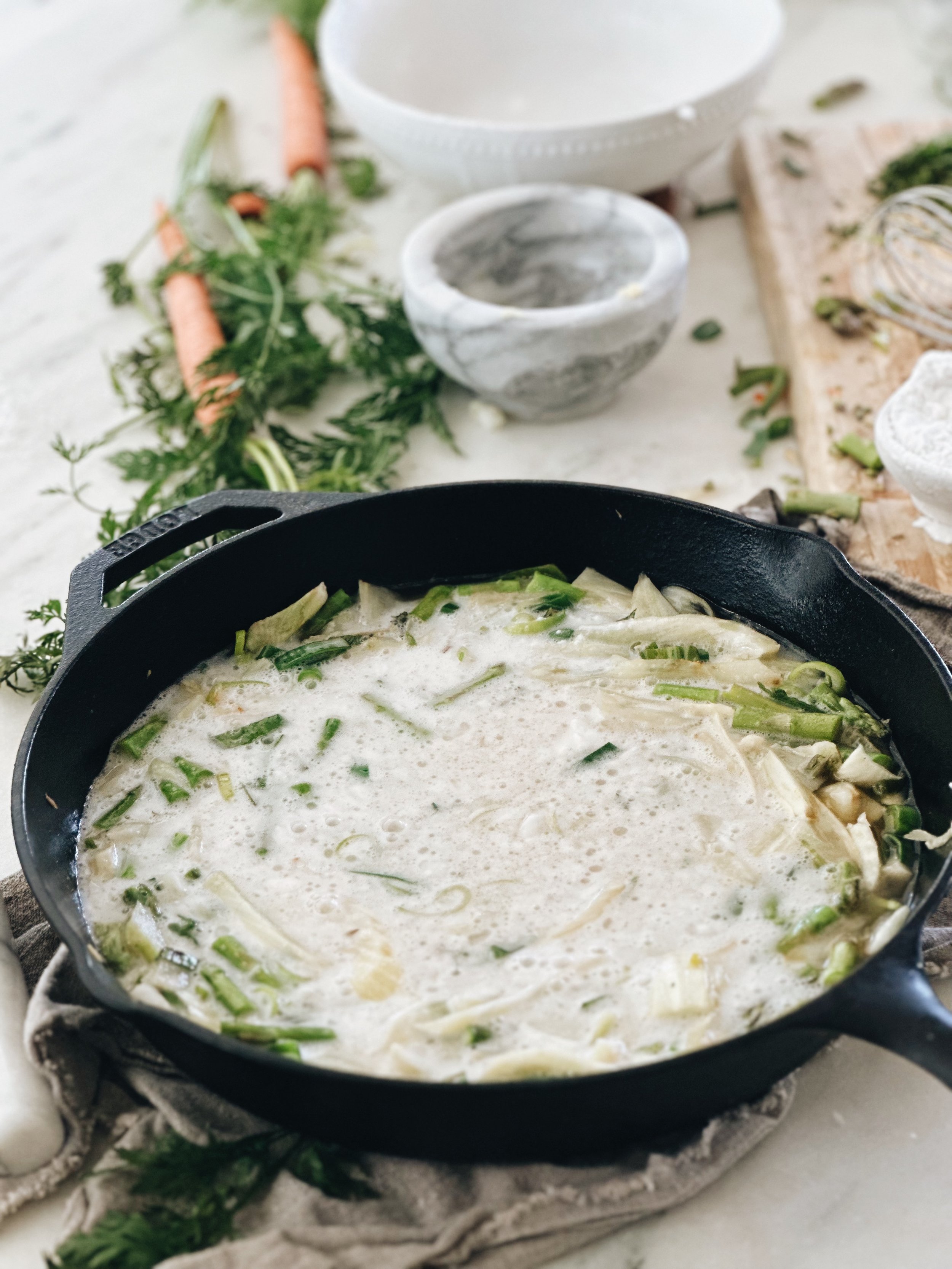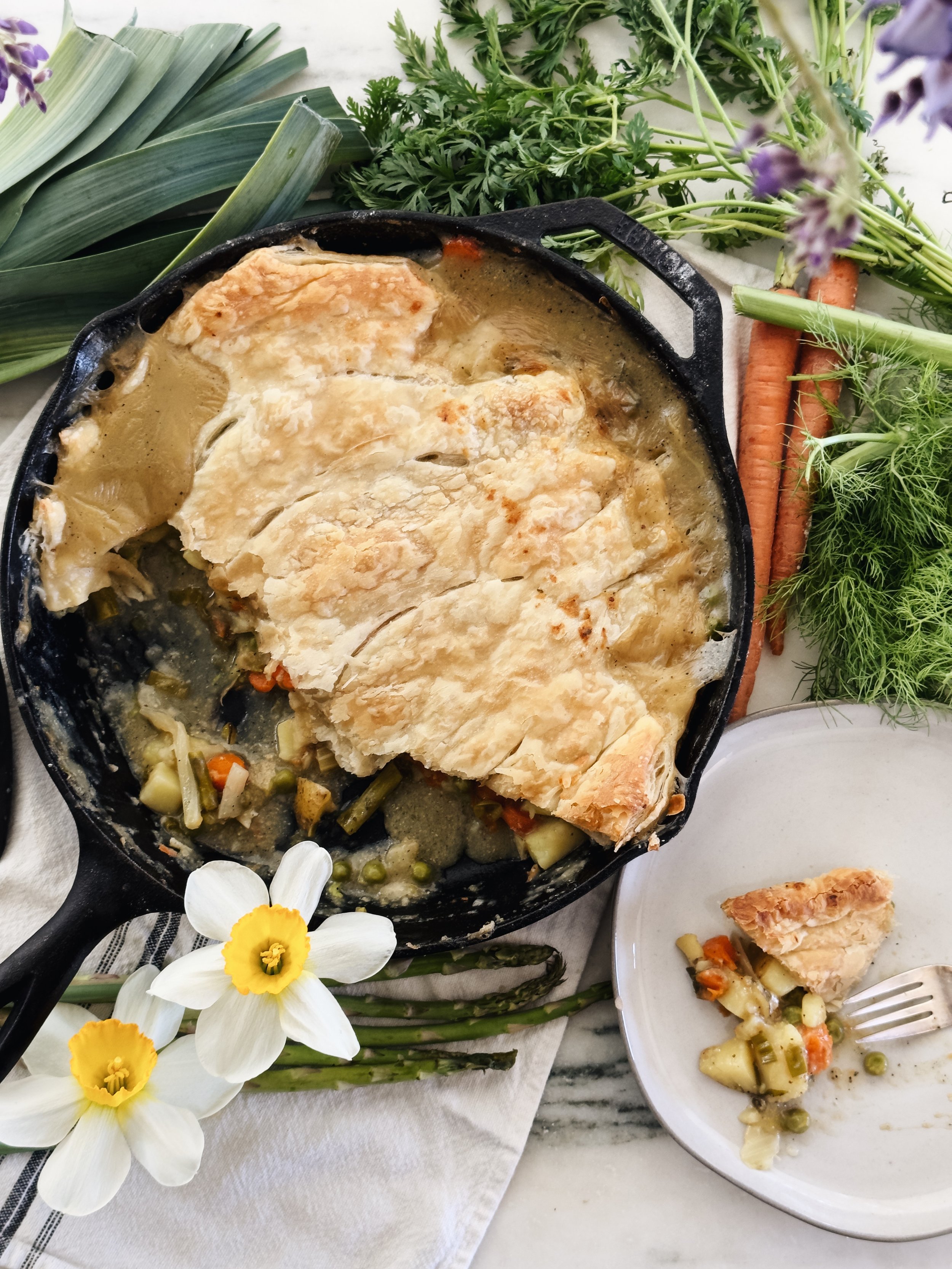Seasonal Eating - The Why and How, With Monthly Seasonal Produce Lists
Moving to the countryside has shifted how we approach our lifestyle and diet. We soon realized, out here in the country, a grocery store was not just a quick drive away, and we needed to get our weekly fresh produce in other ways.
This meant growing our own food or buying from the neighbors and local farmers' markets. And this is also when we realized we needed to shift our meal planning and recipes to include more produce in season according to what is currently available.
Let me just say we soon came to love seasonal eating! It forced us to try out new fruits and vegetables we wouldn't usually buy and make delicious garden-to-table recipes. Our meals suddenly tasted so much tastier and more satisfying!
Not only is seasonal eating tastier, but there are many more advantages to eating in season.
Learn what the advantages are, along with a list of seasonal produce for each month of the year below!
What is seasonal eating?
Seasonal eating is not just a recent new health trend but something that has been practiced for ages. Generations and generations simply ate what was currently growing and available.
Seasonal eating encourages eating fruits and vegetables in season for your specific area, town, or country. This means they are at their nutritional peak when they are naturally ready for harvest.
The produce relies on weather and natural growing conditions where it is planted, with minimal human intervention. This would look like eating asparagus in spring, watermelon in summer, pears in fall, and citrus in winter.
Here is a list of seeds to plant in March and April according to your growing zone to have in-season produce later in the year!
Benefits of Seasonal Eating
Fresher and yummier food
Seasonal food is tastier, fresher, and more nutritious since it is harvested and eaten at peak ripeness. It hasn't been picked too early and traveled far to reach store shelves in time. Often pesticides, preservatives, and waxes are used to preserve foods out of season to make them last longer. The quicker they are enjoyed, the better!
It saves you money
Growing your own veggies will be the most cost-effective in the long run. But even if you buy in-season produce, these will be cheaper as currently there is a supply. Locally sourced fruits and veg also don't need storage and have fewer traveling expenses. You will also save costs by avoiding eating imported produce that is expensive.
Better for the environment
Seasonal produce is grown in natural conditions as nature intended it to be. This means minimal human intervention and unnecessary chemicals that leak into our water and ecosystems. The amount of energy needed to grow and transport is also reduced when we consume in-season produce that is locally sourced.
You'll support local suppliers
When you buy something grown locally, you will promote sustainable living for farmers and invest in your community.
Tips for seasonal eating
Research
Research what produce is in season for your area. When you build your knowledge on seasonal eating, it will become so much easier. This seasonal produce guide from the USDA is a great resource.
Source Local
Find places to buy local produce, such as your local farmer's market or from CSA (community supported agriculture) groups. Finding the freshest produce gets easier when it's right in front of your eyes, and you'll be more inclined to try it out. You also get to talk to the farmers and cultivate new relationships!
No farmer’s Market?
If you live in the city and don’t have a farmer’s market nearby, keep an eye on the grocer’s shelves. Do you notice new products? Do you notice seasonal trends? Chat with the owner or manager to find out what is local and currently in season. In-season produce is also typically abundant and often on sale.
Try new things (even if they look weird!)
Summer crops always seem to be easier and more popular, but put in an effort to also focus on cool-weather produce you don't typically eat. Brassicas have some amazing health benefits! Been seeing that spiky-looking fruit for some time now? Try it! You might just be surprised!
Fit your lifestyle
Seasonal eating should fit your lifestyle and not cause stress. Eating nutritious and enjoyable foods is important, but if it seems too difficult to find the produce, scale back and reassess. Your family should also enjoy it, not be forced to eat things you don't like ;-)
READ MORE: How much to plant per person in the vegetable garden
preserve to enjoy later
Preserve in-season fruits and vegetables to enjoy when they are out of season. I love when I can enjoy a delicious peach jam I made in the summer on waffles on a winter’s morning. Preserving methods include freezing, dehydrating, pickling, and canning.
canning course
Whether you are a total newbie or would like to improve your canning skills, this canning course is IT! Become an expert canner, making delicious canning recipes for many years to come.
You will learn everything you need to know to effectively and safely can at home, overcoming any fears or doubts you may have.
- 25 informative, interactive videos
- The dos and don'ts of canning.
- Your most common canning questions and fears addressed.
- The best practices for perfect canning.
- Five delicious beginner recipes.
monthly seasonal produce
MARCH SEASONAL RECIPE
SPRING VEGETABLE POT PIE
This recipe celebrates spring and is absolutely delicious. You can expect seasonal, vibrant, fresh veggies, flavorful herbs, and a lemony sauce topped with a flaky crust. Yummy!
This will make a decadent meal without much effort. Springtime is full of fresh, vibrant veggies, and I am sure this will be a new weekly favorite to get in those veggies!
ingredients
1 pound of Yukon gold potatoes, cut in bite-size chunks
2 Cups carrots, cut in half moons
3 Tbs plant-based butter or olive oil
1 Onion or leek, chopped small
4 cloves of garlic, chopped small
1 fennel bulb
1 cup asparagus, cut into 1/2” pieces
1 cup vegetable broth
1 cup full-fat coconut milk
1/4 cup cornstarch
1 cup of frozen peas
Juice of 1 lemon + zest from 1/2 that lemon
2 tsp dijon mustard
1/2 tsp sea salt
1 tsp garlic powder
1 tsp onion powder
1 Tbs fresh lemon thyme or regular thyme
1 Tbs fresh tarragon
2 Tbs fresh chives
1 package puff pastry dough ( I use a plant-based one) You can also use pie crust. I have used homemade pie crust, and it’s just as delicious!
directions
Preheat oven to 425 degrees.
Blanch potatoes and carrots by covering them with salted water and simmering for about 10 minutes or until fork tender.
I like to use a large 10” cast iron skillet, but you can use an oven-safe pan or sauté in a regular pan and then switch to an oven-safe dish.
Sauté leeks, garlic, and fennel in the butter or olive oil until translucent. Add asparagus and sauté a few more minutes.
Add the carrots and potatoes into the sauce and mix. Add the vegetable broth and mix well.
Make a place in the center of the pan and add the coconut milk.
Whisk in the cornstarch until dissolved, then mix everything together.
Add the peas, lemon juice, zest, tarragon, chives, and seasonings. Mix well and salt/pepper to taste.
Turn the heat off and let it cool. Roll out your pastry dough until it’s about 1/8” thick.
Cut into the shape of the pan you are using, and place the pastry to cover the whole pan. The dough will shrink when cooking, so allow it to overlap a bit if needed.
Score the pastry with a sharp knife and finish by brushing it with butter or olive oil.
Cook for 20 minutes, turn the heat down to 375, and cook for another 10-15 minutes.
It’s done once the crust is puffy and golden.
Let cool a little bit before serving.
This recipe can be made with any seasonal veggies from spring. Take note that things like carrot tops can be used for pesto, unused leek parts can be used to make vegetable broth, fennel fronds can be used in salad.
Utilize all parts of the veggies to stretch your ingredients and bring more seasonal goodness to your meals.
print this recipe
spring vegetable pot pie
INGREDIENTS
- 1 pound of Yukon gold potatoes, cut into bite-size chunks
- 2 Cups carrots, cut in half moons
- 3 Tbs plant-based butter or olive oil
- 1 Onion or leek, chopped small
- 4 cloves of garlic, chopped small
- 1 fennel bulb
- 1 cup asparagus, cut into 1/2” pieces
- 1 cup vegetable broth
- 1 cup full-fat coconut milk
- 1/4 cup cornstarch
- 1 cup of frozen peas
- Juice of 1 lemon + zest from 1/2 that lemon
- 2 tsp dijon mustard
- 1/2 tsp sea salt
- 1 tsp garlic powder
- 1 tsp onion powder
- 1 Tbs fresh lemon thyme or regular thyme
- 1 Tbs fresh tarragon
- 2 Tbs fresh chives
- 1 package puff pastry dough
DIRECTIONS
- Preheat oven to 425 degrees.
- Blanch potatoes and carrots by covering them with salted water and simmering for about 10 minutes or until fork tender.
- I like to use a large 10” cast iron skillet, but you can use an oven-safe pan or sauté in a regular pan and then switch to an oven-safe dish.
- Sauté leeks, garlic, and fennel in butter or olive oil until translucent. Add asparagus and sauté a few more minutes.
- Add the carrots and potatoes to the sauce and mix. Add the vegetable broth and mix well.
- Make a place in the center of the pan and add the coconut milk.
- Whisk in the cornstarch until dissolved, then mix everything together.
- Add the peas, lemon juice, zest, tarragon, chives, and seasonings. Mix well and salt/pepper to taste.
- Turn the heat off and let it cool. Roll out your pastry dough until it’s about 1/8” thick.
- Cut into the shape of the pan you are using, and place the pastry to cover the whole pan. The dough will shrink when cooking, so allow it to overlap a bit if needed.
- Score the pastry with a sharp knife and finish by brushing it with butter or olive oil.
- Cook for 20 minutes, turn the heat down to 375 and cook for another 10-15 minutes.
- It’s done once the crust is puffy and golden.
- Let cool a little bit before serving.
Happy seasonal eating! When you start eating more seasonal produce, I know you will reap the benefits and enjoy it as much as we do!
Love, Annette xx






